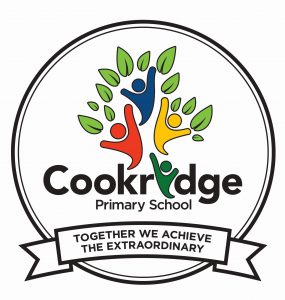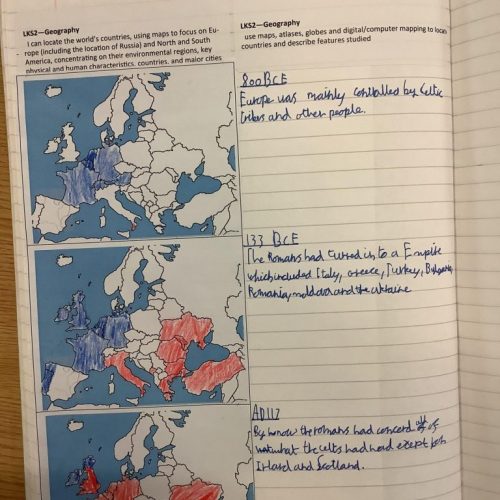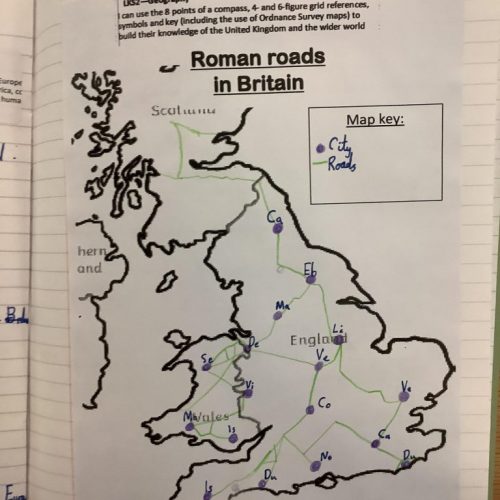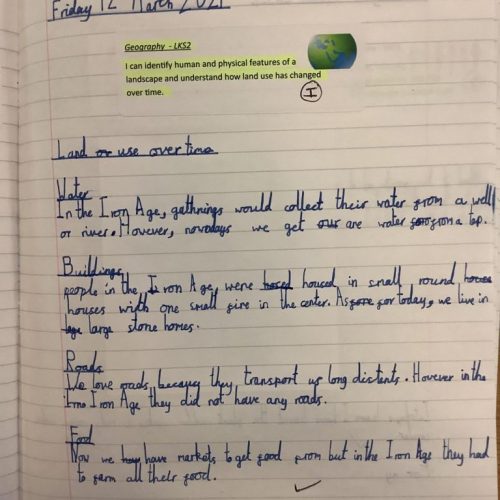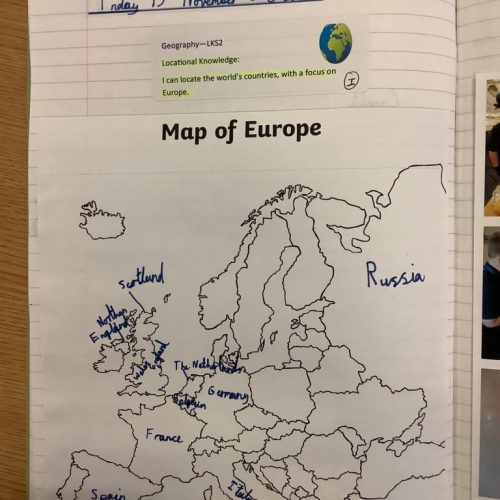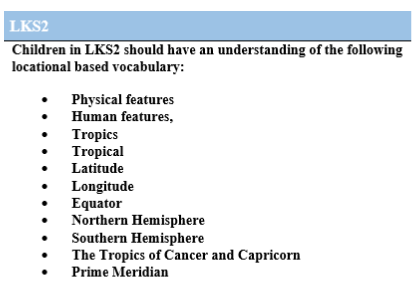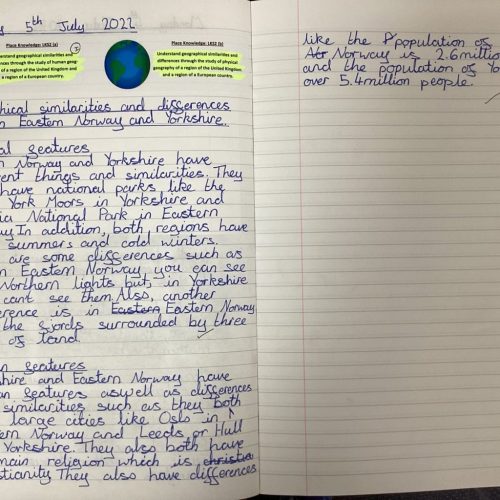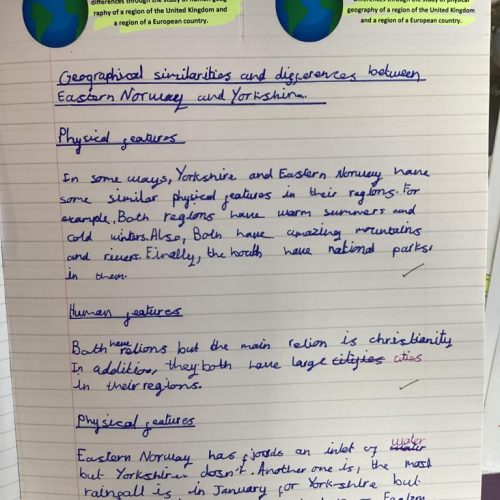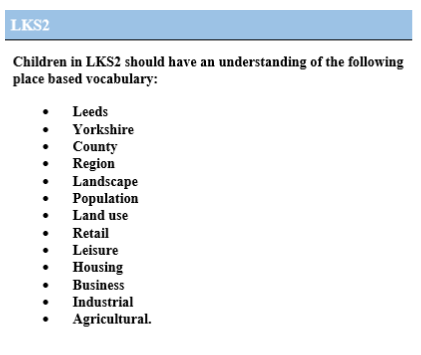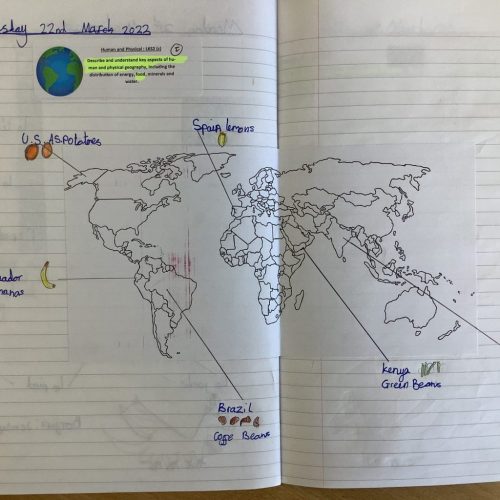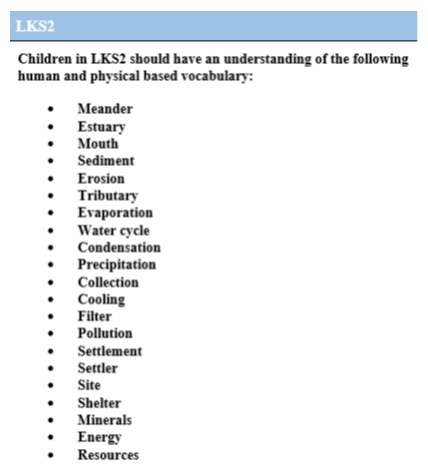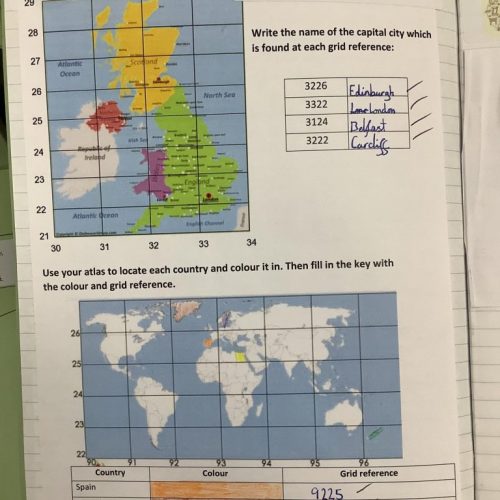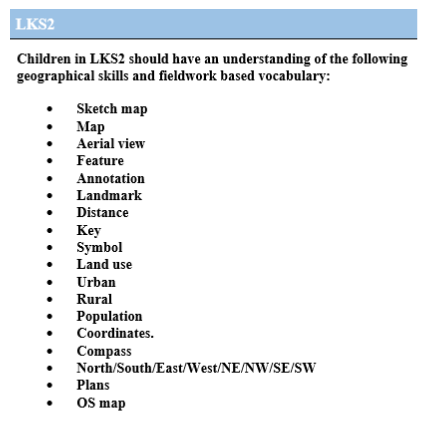| Children can: | |
| a | To know the difference between countries, continents, counties and cities, and name and locate counties and cities of the UK. |
| b | To use a range of sources to support locational knowledge. |
| c | To compare and contrast human and physical characteristics of some countries. |
| d | To know some examples of how land use has changed over time. |
| e | To locate and know the position and significance of latitude, longitude, Equator, Northern Hemisphere, Southern Hemisphere, and the Tropics of Cancer and Capricorn. |
Year 3 – Geography
YEAR 3 - Examples of 'Expected' in the core skill of - Locational Knowledge
Locational Knowledge - Core Skills
YEAR 3 - Examples of 'Expected' in the core skill of - Place Knowledge
Place Knowledge - Core Skills
| Children can: | |
| a | To understand geographical similarities and differences through the study of human and physical geography. |
YEAR 3 - Examples of 'Expected' in the core skill of - Human and Physical Geography
Human and Physical Geography - Core Skills
| Children can: | |
| a | Describe and understand key aspects of physical geography, including rivers and mountains |
| b | Describe and understand key aspects of human geography. |
YEAR 3 - Examples of 'Expected' in the core skill of - Geographical Skills and Fieldwork
Geographical Skills and Fieldwork - Core Skills
| Children can: | |
| a | use maps, atlases, globes and digital/computer mapping to locate countries and describe features studied. |
| b | use the 8 points of a compass, 4- figure grid references, symbols and key (including the use of Ordnance Survey maps) to build their knowledge of the United Kingdom and the wider world |
| c | use fieldwork to observe, measure record and present the human and physical features in the local area using a range of methods |
